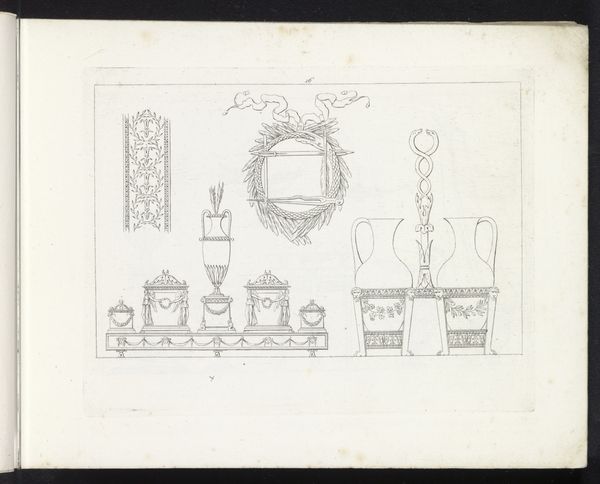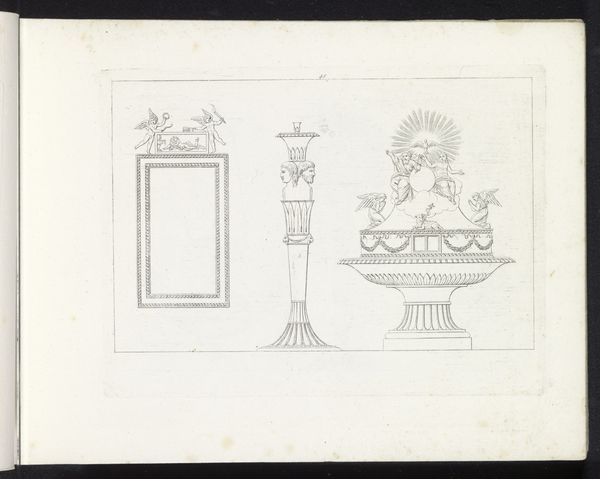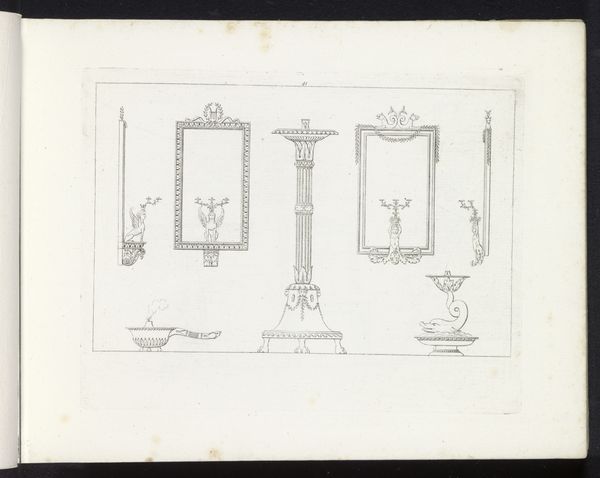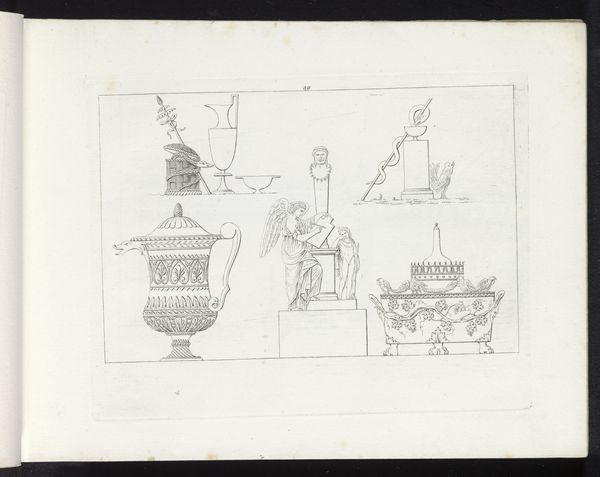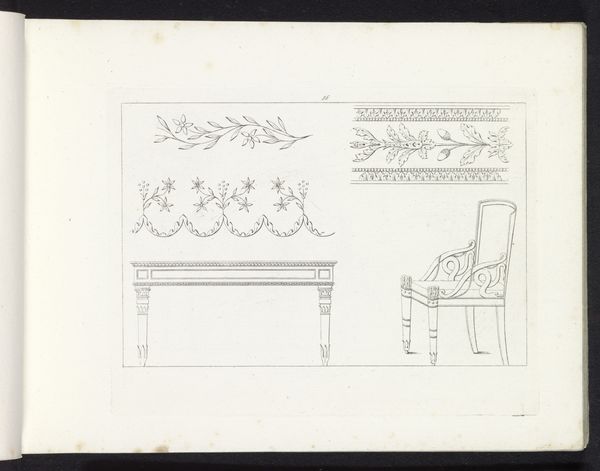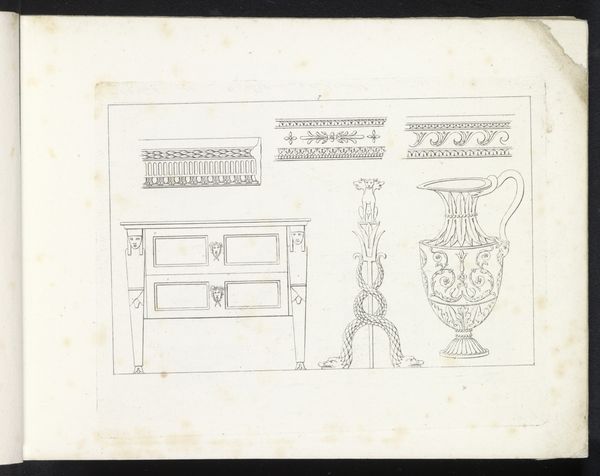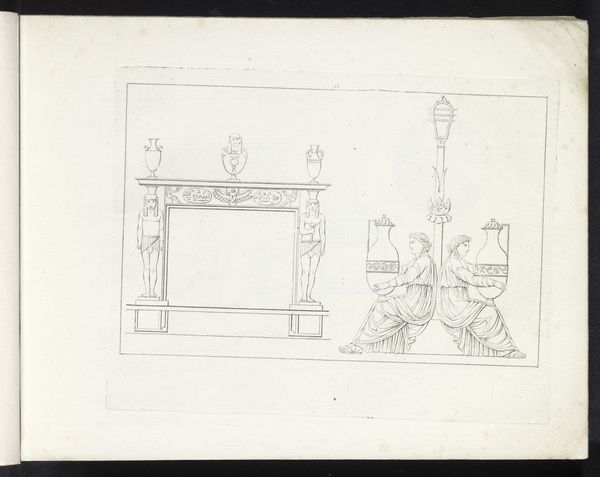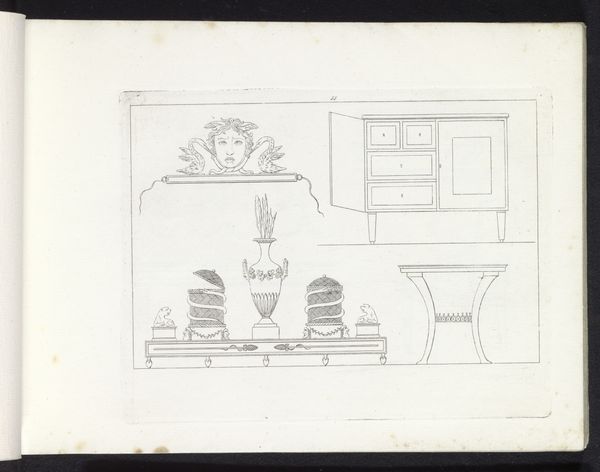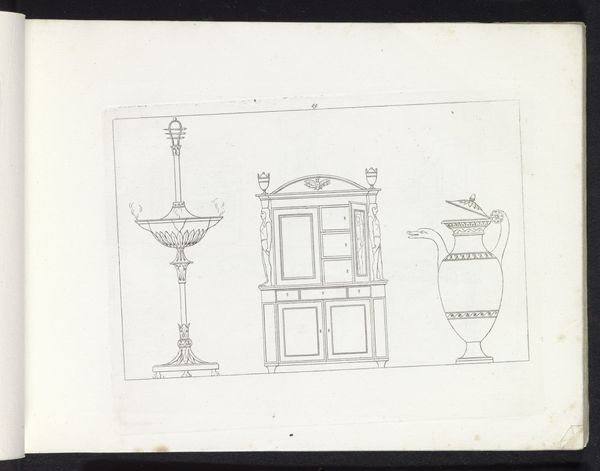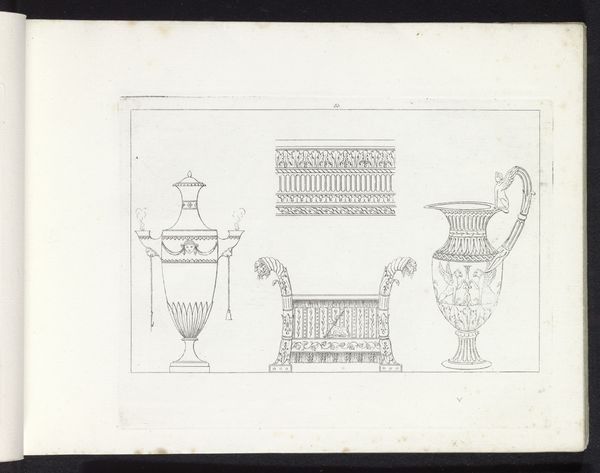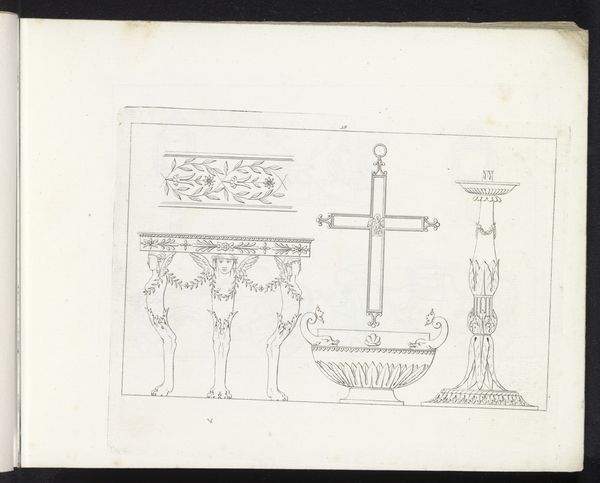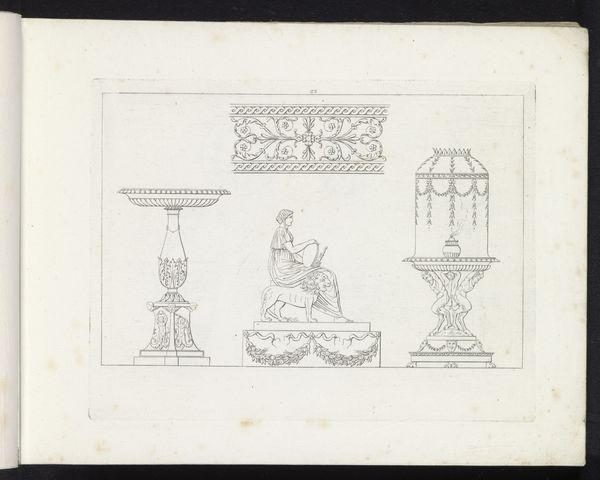
drawing, ink
#
drawing
#
neoclacissism
#
ink
#
geometric
#
academic-art
Dimensions: height 166 mm, width 216 mm
Copyright: Rijks Museum: Open Domain
Curator: Well, the artist here, Pietro Ruga, created this pen and ink drawing titled "Twee scharen, een bijzettafel, twee urnen en een schaal," which translates to “Two pairs of scissors, a side table, two urns and a bowl" in 1817. Editor: It’s a fascinating still life… so clinical, yet with a delicate touch in the line work. Almost architectural in its precision. There's a coolness, a distance… perhaps intentional, given the historical context? Curator: Absolutely. The piece embodies the Neoclassical style that dominated the era. Notice the focus on classical forms—urns, the faces... Think about how those shapes connect to the history they evoke and, consequently, what types of consumers would engage with them. The use of drawing aligns with the broader academic art practice that emphasized skill. Editor: It makes me think about the tools required to bring about art: scissors and technical drawings. Also, look how flat everything appears. What does the two-dimensionality do for our reading of craft? Is it being elevated or used in this case as simply a way to portray the objects? Curator: It pushes us to think about the economics of taste and what drove them, literally, as it seems like a page from a catalogue. Imagine commissioning something like this – bespoke scissors and urns. Who would possess such things? It's as if Ruga's meticulous method of craftsmanship emphasizes the market forces that shape what gets crafted. Editor: That is what really gets to the center of the discussion here, right? The influence of the Neoclassical style and taste is obvious... the question then becomes, to whom, why and how was the market impacted by the revival? These aren't just objects; they reflect an ideal consumer. The urns even bring to mind funerary settings and the relationship between the elite class and death. Curator: Very much so. Thinking about all those objects laid out here prompts one to ponder the interplay of artistry, commerce, and social display. The politics of design and who benefits is embedded in every stroke. Editor: It certainly reveals how tastes reflect not only artistic inclinations, but profound class dynamics, to underscore societal aspirations of the time. Curator: Right. Editor: What an intricate image and discussion!
Comments
No comments
Be the first to comment and join the conversation on the ultimate creative platform.
